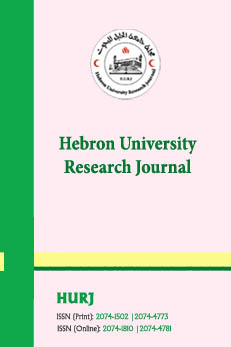Hebron University Research Journal (HURJ): B- (Humanities)
التحليل المكاني للمستوطنات الاسرائيلية في اقليم الخليل
- Author: أحمد اغريب
- ISBN: 2074-4781
- N°: 0
- Year: 2008
-
Link:
 التحليل المكاني للمستوطنات الاسرائيلية في اقليم الخليل
التحليل المكاني للمستوطنات الاسرائيلية في اقليم الخليل
Review
الملخص:
غرض هذا البحث تحليل ظاهرة الاستيطان الإسرائيلي في إقليم الخليل، و معرفة محددات الاستيطان الجغرافية و الجيوسياسية، و الجيواقتصادية، و الجيواستراتيجية و موجهات السياسة الإسرائيلية العامة تجاه إقليم الخليل، و يهدف البحث أيضا إلى قياس نمط انتشار المستوطنات و تحليل الموقع و الموضع، و استكشاف أثر تلك المستوطنات على الإقليم من عدة أبعاد ضمن مجالها الحيوي.
و تبين نتيجة التحليل أن هناك جيوبوليتيكية إسرائيلية محددة تجاه إقليم الخليل، إضافة إلى موجهات دينية و تاريخية و أمنية و سياسية و مكانية لعملية الاستيطان، و قد فسرت كمية الأمطار و الارتفاع عن سطح البحر بالقرب من الطرق الرئيسية و المدن نسبة (17%) من مجمل التباين على مستوى ثقة (99%)، و من المعتقد أن العامل السياسي هو الذي يفسر النسبة الكبرى من التباين لمواقع المستوطنات، أما قرينة التجاور بلغت قيمتها (1.16) و بالتالي طابع الانتشار للمستوطنات منتظم، و هذا يدل على مركزية التخطيط، و تبين بأن (90%) من المستوطنات شيدت في عهد حزب الليكود لدولة إسرائيل، و أن (75%) من المستوطنات ذات طابع زراعي صناعي و شبه عسكري، و قد امتد تأثير المستوطنات كل مقومات الحياة في الإقليم، و بالتالي لابد من إزالة تلك المستوطنات لأنها غير شرعية في المواثيق الدولية كافة، و إحداث تنمية شاملة تستند إلى القدرة على تنظيم المجال الجغرافي الذي مؤداه الترابط المكاني المحلي و الإقليمي.
:Abstract
The purpose of this paper is to analyze the phenomenon of settlements in Hebron governorate. It also aims at finding out the factors determining the nature of settlements from a geographical, geopolitical, geo-economic and geostrategic perspective. It brings under close scrutiny the Israeli political approach to the area of Hebron in general. The paper further investigates the pattern of settlement spread in Hebron and analyzes this pattern in terms of location, thus exploring the influence of these settlements on the governorate from various dimensions including the vital atmosphere.
statistical analysis shows that there is a definite Israeli geopolitical agenda towards Hebron in addition to the religious, historical, and security-related approaches. Statistical analysis also showed that differences could be due to the amount of rainfall, altitude in relation to sea level, and proximity to main roads. These variables explained 17% of the variation at (alpha= .05). The political variable is the one which explains the highest percentage of variation withreference to settlement location.
The Nearest Neighbor Analysis turned out to be 1.16 which means that the .distribution is systematic thus reflecting centralized planning
The study also shows that ninety percent of the settlements were built during the Likud reign and that 75% of these settlements are agricultural and industrial in nature. Most of them are also semi military in nature. These settlements have influenced all life aspects in the area of Hebron. It is theref fore essential to put into effect a comprehensive developmental plan based on the ability to organize the geographical scope, a process that leads to the .local and regional cohesion.





